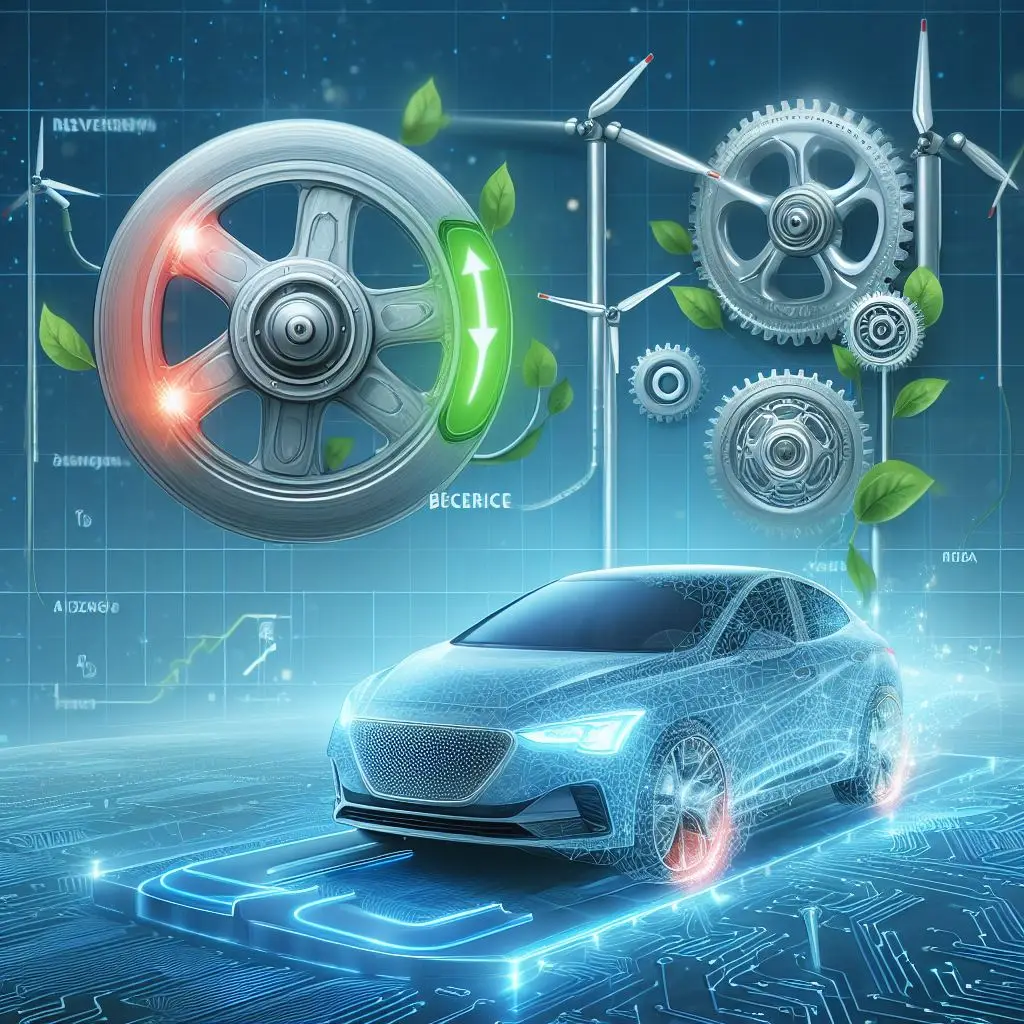One of the key features that sets EVs apart from their internal combustion engine counterparts is the electric vehicle brake system called regenerative braking. It uses the same principle as the old dynamo on your bike (if you’re old enough to remember) which when pressed against the wheel, provided enough power for a headlight. Further development in hybrid vehicles used the same momentum to slow the car, while putting energy back into the battery. I’m going to delve into what regenerative braking is, how it works, and its impact on energy efficiency in an electric vehicle.

What is Regenerative Braking?
Regenerative braking uses the electric motor, instead of your brake pads and discs, to slow the car down. At the same time it spins the electric motor, temporarily turning it into a generator to put power back into the battery.
I recently heard a story about someone having their Kia EV6 serviced and being told “Your brake pads are good, they have over 9mm left on them”. The customer asked “What do they start with?” and the mechanic said “10mm”. This was their 30,000km service. Your EV will still have traditional brakes, but these are used far less often, resulting in less heat generation and less wear and tear on the brake components.
Let’s break down how it works:
Kinetic Energy Conversion:
- When you apply the brakes in an EV, the electric motor switches into generator mode.
- As the wheels slow down, the kinetic energy of the moving vehicle is converted into electrical energy.
- The resistance created by the electric motor slows the car down.
Energy Storage:
- The generated electrical energy is fed back into the vehicle’s battery pack.
- This process charges the battery, effectively storing the energy for future use.
Efficiency Gains:
- By recovering energy that would otherwise be lost as heat, regenerative braking significantly improves overall energy efficiency.
- It also reduces wear and tear on the brake pads, extending their lifespan.
Benefits of Regenerative Braking
Extended Range:
- Regenerative braking contributes to an EV’s range by replenishing the battery during deceleration and braking.
- In stop-and-go traffic or during downhill descents, the system maximizes energy recovery.
- In many cars the adaptive cruise control keeps you at a safe distance from the car in front. If you get a little close, the regenerative braking slows you down and adds energy back to the battery.
Smooth Deceleration:
- Unlike abrupt stops with traditional brakes, regenerative braking provides a smoother deceleration when your EV brakes.
- Drivers appreciate the seamless transition between acceleration and braking.
- The car will start braking as soon as you take your foot off the pedal, rather than waiting for your foot to transition across to the brake pedal. In one-pedal mode, this can bring you to a complete stop. Different modes in your EV will produce more or less braking. You can even turn it off for a traditional ICE coasting effect. I’m reluctant to call this a safety feature, but not having to wait for your foot to move to the brake pedal probably is.
Reduced Brake Wear:
- Since regenerative braking relies less on friction, it puts less strain on the brake pads.
- This results in reduced maintenance costs and longer-lasting brakes.
Environmental Impact:
- By capturing energy that would otherwise be wasted, regenerative braking contributes to a cleaner environment.
- It aligns with the goal of reducing greenhouse gas emissions.
Challenges and Considerations
Adaptation:
- Drivers accustomed to conventional braking may need time to adjust to the different feel of regenerative braking.
- Some systems allow adjustable levels of regen, allowing drivers to choose their preferred braking intensity.
Limitations:
- Regenerative braking is most effective at low speeds and during moderate braking.
- At high speeds or during emergency stops, traditional friction brakes still play a crucial role. There will still be energy recovered, but some will be ‘wasted’ as heat from the brake pads.
Integration with Mechanical Brakes:
- Most EVs use a combination of regenerative and friction brakes.
- The seamless integration of both systems ensures optimal braking performance.
Conclusion
While many are keen to point out the green aspects (and I will too), there are so many other benefits. Even if you hated the environment, I reckon you’d still like regenerative braking. I just like the feel of it. It feels smoother, it feels safer and I like the driving experience. It improves my range. Imagine a petrol engine creating petrol and putting it back in your tank when you step off the accelerator. Hard to imagine, right, but that’s what we’re doing here, creating electricity and putting it back in the battery.
Regenerative braking is a remarkable innovation that enhances the efficiency and sustainability of electric vehicles. As technology continues to evolve, we can expect further improvements in regenerative braking systems, making EVs even more appealing to eco-conscious consumers. So next time you step on the brakes in your electric car, remember that you’re not just slowing down—you’re also harnessing energy for a greener future!


